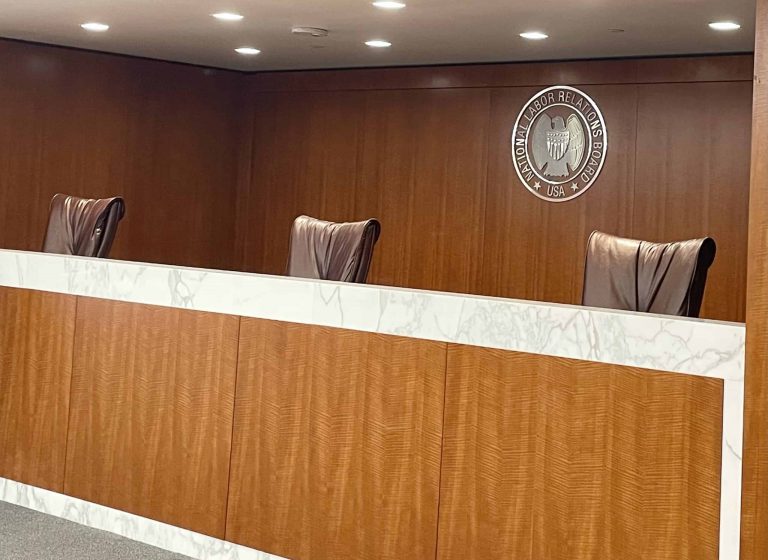
Qianfeng Lin is a student at Harvard Law School and a member of the Labor and Employment Lab.
Migrant workers, especially indebted ones, are highly vulnerable to forced labor exploitation in the host country. Wang v. Gold Mantis is a case in which seven Chinese construction workers sued a casino in Saipan, the Commonwealth of Northern Mariana Islands (CNMI) for forced labor and human trafficking under the Trafficking Victims Protection Reauthorization Act (TVPRA) and won.
The CNMI legislature probably wasn’t thinking hard enough about what could have gone wrong when they granted Imperial Pacific, an HK-based company, the exclusive license to operate a casino resort in Saipan. Imperial Pacific’s Saipan subsidiary subcontracted with two Chinese construction companies, Gold Mantis and MCC International, which brought in thousands of Chinese workers. The three companies, all named as defendants, forced Chinese workers into “extreme, dangerous and inhuman work conditions,” said Ramona Manglona, Chief Judge of the District Court for the CNMI.
The scheme began with recruitment back in China. Unlicensed recruiters targeted Chinese laborers—15-25 years old, male, with low levels of educational attainment. They lured the workers in by misrepresenting high wages, good conditions, and legal work status and charged every worker a substantial broker fee as high as $10,000 (China’s GDP per capita was around $8,000). But the deal sounded appealing and, unfortunately, realistic since the job is in the US. As a result, workers became entrapped with debts as they borrowed the recruitment fees from relatives, friends, or worse, predatory lenders.
Once workers made their payments, things went down quickly. They had to sign adverse contracts that commanded obedience and prohibited strikes. Recruiters coached them on how to defraud immigration officers. Once they cleared immigration, it was too late to turn back. Handlers in the US frequently reminded workers of their illegal actions that could lead to arrest and deportation at any time, even if they registered a complaint to the US government.
The “american dream” became a nightmare when workers arrived at the construction camp, cramming into rooms with bunk beds where rats crawled on their bodies. Local supervisors charged them more fees and confiscated their passports. Workers were subject to over 12-hour workdays without rest and sometimes 24-hour work shifts. They were yelled at by their supervisors and forced to pay fines for arriving late or not working hard enough. They had to endure unsanitary living conditions: no air conditioning (local weather averages 80°F), inadequate showers, and browned toilets. They didn’t have enough food, and occasionally they had to get by with spoiled food. Worst of all, their mobility and communication with the outside world were seriously restricted under supervisory surveillance.
Worksite injuries varied from severe burns to damaged limbs were so rampant that the local hospital got suspicious of why severely injured Chinese workers kept filling its ER. In Wang’s case, he suffered burns to his lower left leg when a spark ignited as he was instructed to cut a metal barrel. The contractor, fearing exposure, threatened Wang that he would be arrested if he went to the hospital and instead gave him two rolls of gauze. Wang lost his ability to work as a result of delayed treatment. When contractors did take an injured worker to the hospital, they asked for simple treatment and immediately sent the worker back to China.
Defendants violated multiple laws and regulations to stay under the radar. First, they concealed the injuries from OSHA, a blatant breach of the duty to report. They refused to grant one OSHA inspector access to the worksite and relented only when OSHA brought a court action in December 2016. Second, they hid undocumented workers from government authorities by instructing these workers not to come to the worksite when they learned of an inspection. They also coached these workers on how to respond to the government, just in case.
Imperial Pacific’s abuse went undetected for over a year until a worker fell to his death at the casino construction site in late March 2017. Days later, the FBI raided the contractors’ offices and found the workers’ confiscated passports and lists identifying large numbers of undocumented workers. Several managers were arrested. Subcontractors then sought to fly the undocumented workers back to China and, again, threatened workers with their illegal status. One wrinkle was that undocumented workers whose passports ended up in the FBI’s evidence room could not leave. They started to organize and protest, which generated attention from the local media (e.g., Saipan casino workers protest for payment as FBI cites illegal labor). Subcontractors quickly settled with USDOL to compensate 2,400 workers for wage violations and illegitimate recruitment fees, totaling $ 13.9 million.
Predictably, Imperial Pacific denied any responsibilities for its subcontractors’ violations but agreed to provide the workers with accommodations out of “humanitarian concern.” Pending the separate negotiations between USDOL and subcontractors, Imperial Pacific decided to pay workers still in Saipan to get them off the island and end the bad publicity. When the workers rejected the meager compensation of its first offer, Imperial Pacific upped the ante to get the deal done.
Criminal prosecution followed the FBI investigation. Arrested managers all eventually pleaded guilty to charges of illegally employing and harboring undocumented workers. On the civil litigation front, Judge Manglona entered a default judgment in the amount of $5.9 million (but subtracted the amount Gold Mantis and MCC International had already agreed to pay) in favor of the plaintiffs, given Imperial Pacific’s failure to comply with discovery and its persistent delay.
This Saipan case contributes to the discussion about using strategic litigation – and the TVPRA in particular – to combat employment abuses. For starters, by allowing survivors to advocate on their own behalf, litigation can facilitate the remedy of abuses, albeit through a long process. On the other hand, enforcement can be uncertain when the subsidiary becomes judgment-proof and the parent company, as in Wang’s case, takes shelter behind the corporate veil. The case highlights the power of organizing, and the role played by media (including national outlets like AP News, Bloomberg, and NY Times) in cases like this.
Finally, the judgment should alert, if not deter, future offenders. As Aaron Halegua, the plaintiffs’ attorney, stated, “Eradicating forced labor requires that perpetrators of such abuses face serious consequences.” And, indeed, the judge in this case awarded significant damages, including lost wages, emotional distress, pain and suffering damages, and punitive damages. Going forward, project owners may find it harder to escape responsibility.










Daily News & Commentary
Start your day with our roundup of the latest labor developments. See all
December 22
Worker-friendly legislation enacted in New York; UW Professor wins free speech case; Trucking company ordered to pay $23 million to Teamsters.
December 21
Argentine unions march against labor law reform; WNBA players vote to authorize a strike; and the NLRB prepares to clear its backlog.
December 19
Labor law professors file an amici curiae and the NLRB regains quorum.
December 18
New Jersey adopts disparate impact rules; Teamsters oppose railroad merger; court pauses more shutdown layoffs.
December 17
The TSA suspends a labor union representing 47,000 officers for a second time; the Trump administration seeks to recruit over 1,000 artificial intelligence experts to the federal workforce; and the New York Times reports on the tumultuous changes that U.S. labor relations has seen over the past year.
December 16
Second Circuit affirms dismissal of former collegiate athletes’ antitrust suit; UPS will invest $120 million in truck-unloading robots; Sharon Block argues there are reasons for optimism about labor’s future.